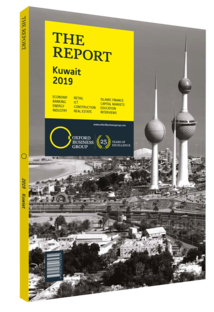As urban populations undergo rapid growth, planners strive to develop northern Kuwait’s
Major infrastructure developments are driving Kuwait’s construction sector, as large-scale projects are either nearing completion or gaining renewed momentum. As such, planners are looking to the sparsely populated northern area of the country – commonly known as the Northern Gateway – for the implementation of mega-developments that will require significant political, and public and private sector backing.
Causeway
One of the largest road transport projects of late is the 37.5-km Sheikh Jaber Al Ahmad Al Sabah Causeway, which opened to traffic on May 1, 2019, shortening the driving time between the capital Kuwait City and Subiyah, which is located to the north of Kuwait Bay, from 90 minutes to less than 30 minutes. The causeway is a 30.6-metre-wide dual carriageway, with a shorter 13-km spur at its southern end running from Kuwait City to Doha. The $2.6bn project was designed by France’s Systra and took over five years to complete. Construction was carried out by Kuwait’s Combined Group Contracting Company.
Silk City
The causeway falls in with a wider initiative, namely the $82.2bn Madinat Al Hareer mega-project, also known as Silk City, a 250-sq-km planned urban area in Subiyah. The Silk City project will tie together the development of five islands, linked by the causeway at its south-west end, and the new Mubarak Al Kabeer Port at its north-east side on Boubyan Island (see Transport & Logistics chapter). In addition, the Silk City development will see the construction of a new airport, a nature reserve, an Olympic stadium, the 1-km-tall Burj Mubarak Al Kabir tower, accommodation for some 700,000 people, as well as an adjacent industrial and logistics zone. To serve the new developments, the Subiyah Thermal Power Plant is currently being extended with a further 900 MW of generation capacity. In the long term, this is an integral step to powering the development of future cities stretching from Subiyah to the Iraqi border.
Port Side
While the Mubarak Al Kabeer Port was originally planned for completion in 2016, a series of setbacks saw the due date pushed to 2019 and then again to 2020. Renewed momentum has gathered around the project, however, and in late 2018 a package of key infrastructure works, including dredging, land reclamation and road building, were put to tender. At that time, the project was reportedly 52% complete.
In early 2019 the port was given an additional boost by the signing of memorandum of understanding between the Kuwaiti and Chinese governments to further Chinese involvement in Silk City’s development. The agreement reinforced Kuwait’s commitment to the Belt and Road Initiative (BRI), in which the Mubarak Al Kabeer Port plays a major role. “There has been a real shift in gears recently with the Northern Gateway project,” Mona Bseiso, economic consultant for the Kuwait Direct Investment Promotion Authority, told OBG. “It is a very important investment in the future of Kuwait and is considered a special economic zone sunder the fifth theme of New Kuwait 2035.”
Challenges
While the wider project is expected to benefit the country, certain aspects are running into opposition, including a proposal that Silk City be administered under special laws designed to attract foreign investors. This idea has been met with some resistance, with several deputies in Parliament expressing concern over its impact on cultural and religious norms. The project also has implications for infrastructure far beyond domestic borders, with the port being well placed to open up routes into Iraq and Iran, further tying Kuwait with logistics initiatives included in the BRI.
Crucial to the project’s success will be Kuwait’s relationship with neighbouring Iraq. Ties between the two countries have improved in recent years, and in 2018 Kuwait held the first International Conference for Reconstruction of Iraq. In May 2019 Kuwait also announced it would be funding the reconstruction of border posts with Iraq in an effort to enhance cross-border trade. The future for Kuwait’s local infrastructure development may therefore truly be global.
You have reached the limit of premium articles you can view for free.
Choose from the options below to purchase print or digital editions of our Reports. You can also purchase a website subscription giving you unlimited access to all of our Reports online for 12 months.
If you have already purchased this Report or have a website subscription, please login to continue.

